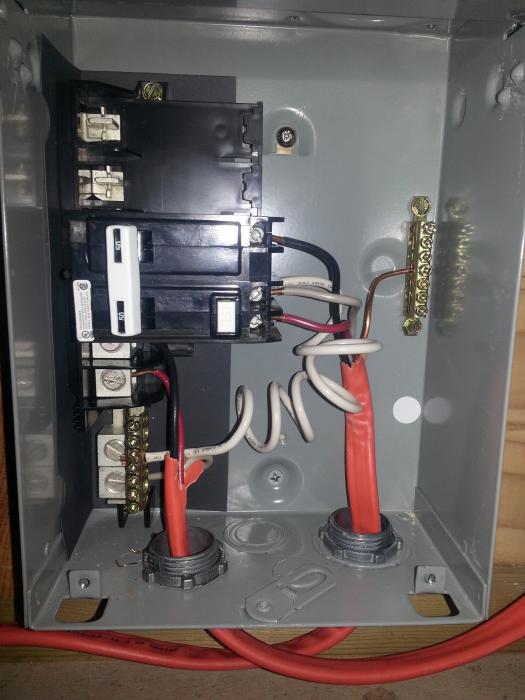Holy dead thread...
This is how to turn a 3 wire supply into a 4 wire run to your panel. Here's how it goes...
Hot A and Hot B cary through the breaker - pretty simple.
Neutral goes to the terminal block (yellow wire going to block shown on left). The GFCI breaker has a neutral pig-tail, which is that curly white wire. It also goes to the terminal block (shown on left). Lastly, a jumper is run from the Neutral terminal block over to the ground terminal block. Ground and Neutral are normally bonded at the MAIN panel, but if you only have a 3 wire supply and you can't go and put in a new 4 wire outlet run all the way back to the main panel, this is the best way to go.
On the load side - the neutral line ties into the breaker (yellow wire coming out of the breaker), and the ground goes to your ground terminal (Green wire).
















































![Craft A Brew - Safale BE-256 Yeast - Fermentis - Belgian Ale Dry Yeast - For Belgian & Strong Ales - Ingredients for Home Brewing - Beer Making Supplies - [3 Pack]](https://m.media-amazon.com/images/I/51bcKEwQmWL._SL500_.jpg)











